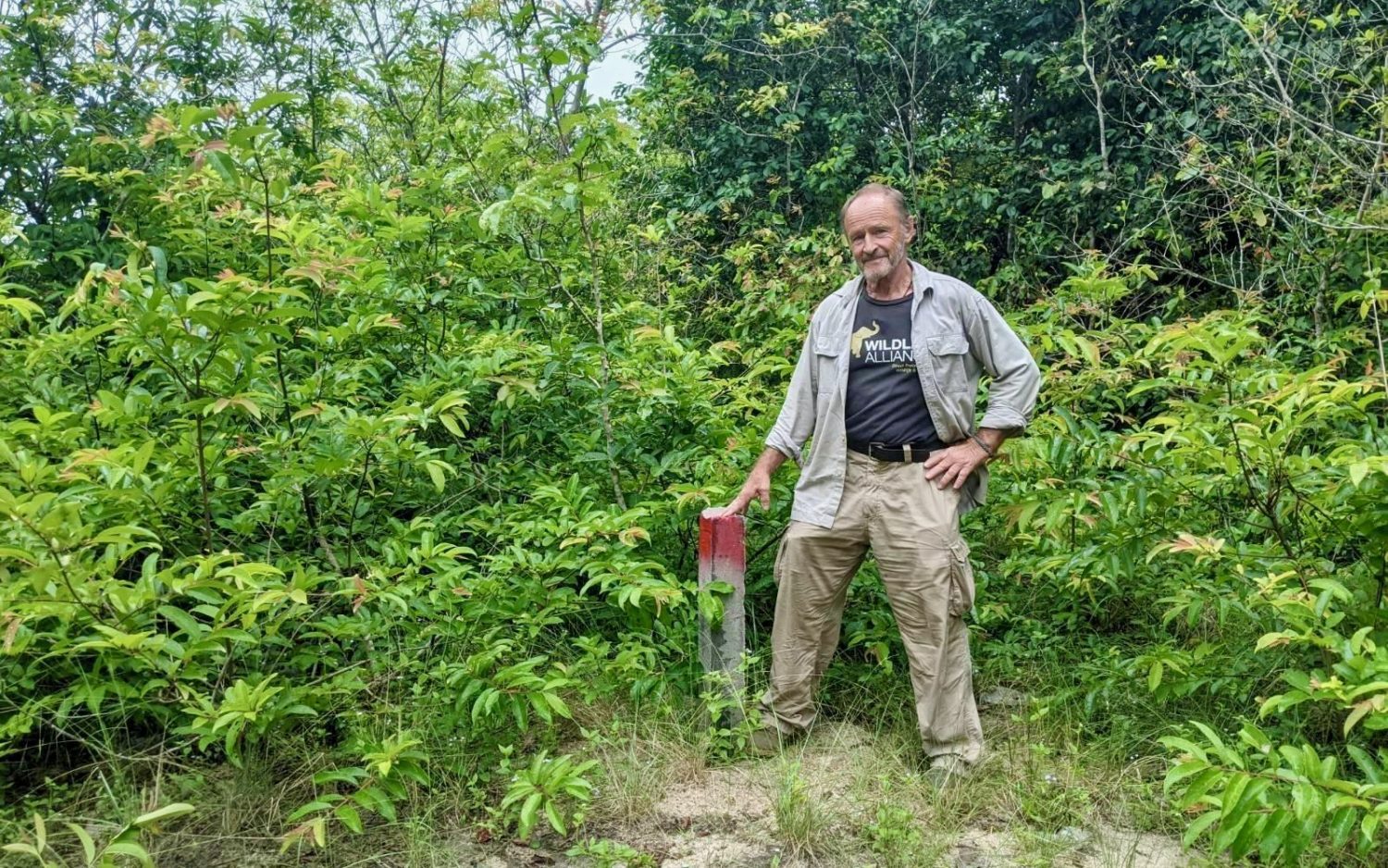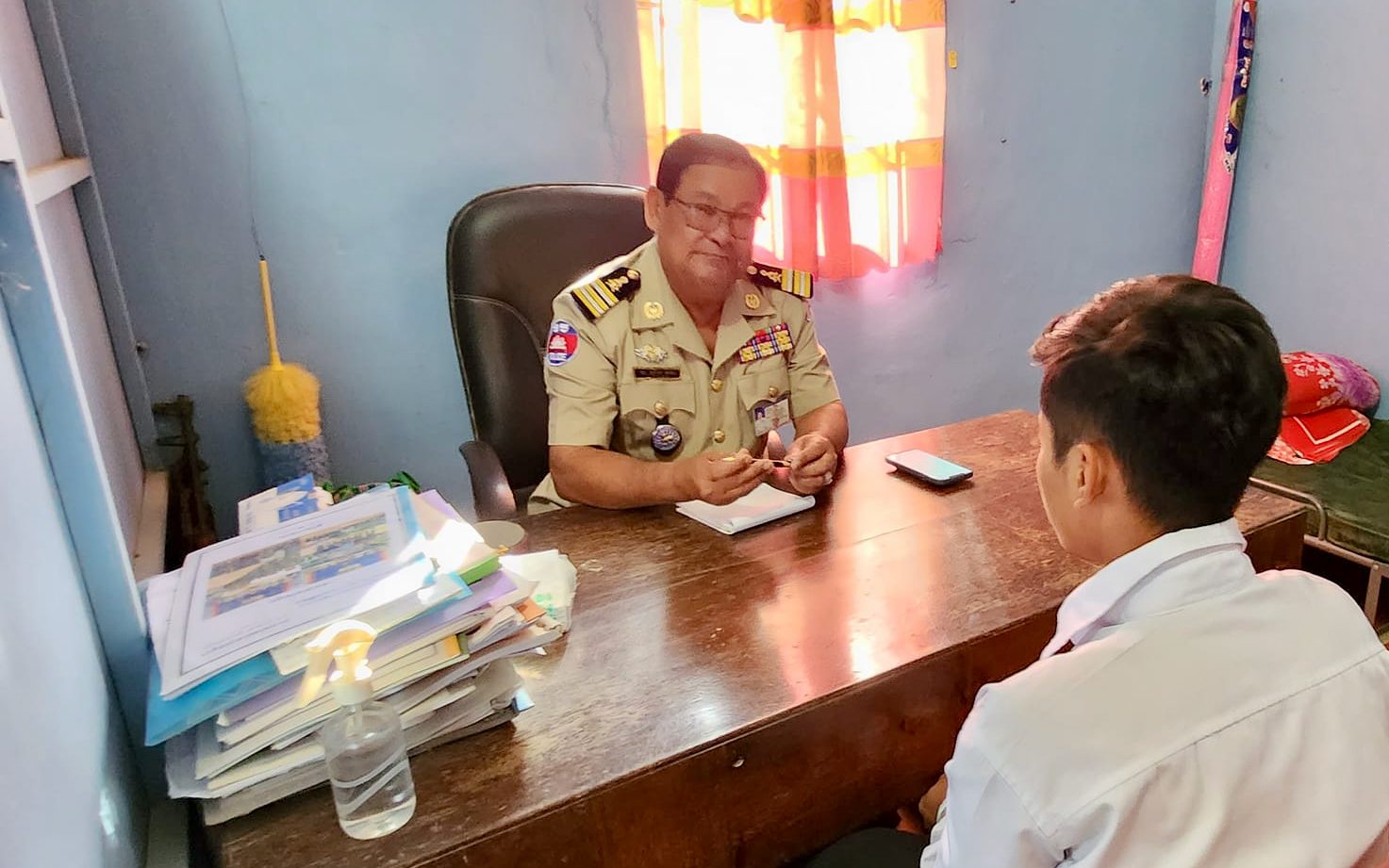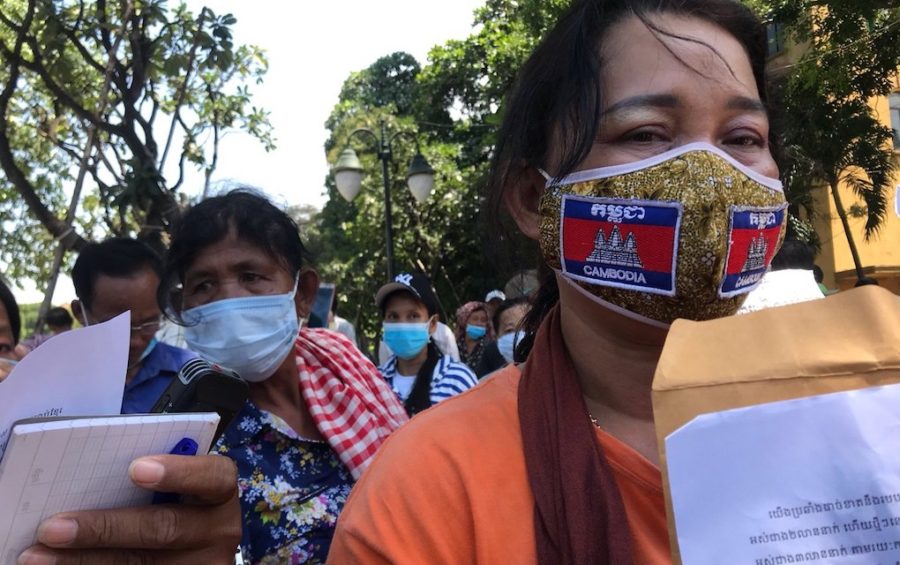The borders of the Phnom Tamao forests are stark: On one side are dense woods, the footprints of rare wild animals visible under green canopies; on the other are dirt roads marked by tire tracks and farms.
Satellite imagery gives the same clear impression: Phnom Tamao is a patch of dark-green forest enclosed within the sharp confines of a protected area — an island of nature within a sea of farmland.
The Phnom Tamao mountain, home to a wildlife rescue center of the same name, shelters several threatened species, some of them being restored under the care of conservationists.
Since early this year, groups of workers have been installing boundary markers within the forest itself, and a Council of Ministers document seen by reporters — and confirmed by authorities — says 500 hectares of state-administered land is being privatized. The reclassification of land could gouge out an expanse of construction within the sanctuary.
The document does not disclose the exact location of the privatization, and does not name the companies involved. But satellite imagery shows the construction of larger roads pressing onto the edge of the forest in recent months, and this week a pagoda inside the woods has been invited to a meeting with the Takeo provincial administration about “exchanging land.”
Nick Marx, a director at Wildlife Alliance, which jointly operates the wildlife rescue center alongside the state, took reporters to a corner of the Phnom Tamao forest on Tuesday. After walking about 300 meters into the forest, he pointed out short cement posts that have been inserted into the ground — boundary markers designating plots of land.
Individual trees were also marked and the ground around them was cleared — luxury thnong, a valuable species used in furniture making. Marx said some of the trees had already been removed, likely taken to be replanted in borey gated housing developments.
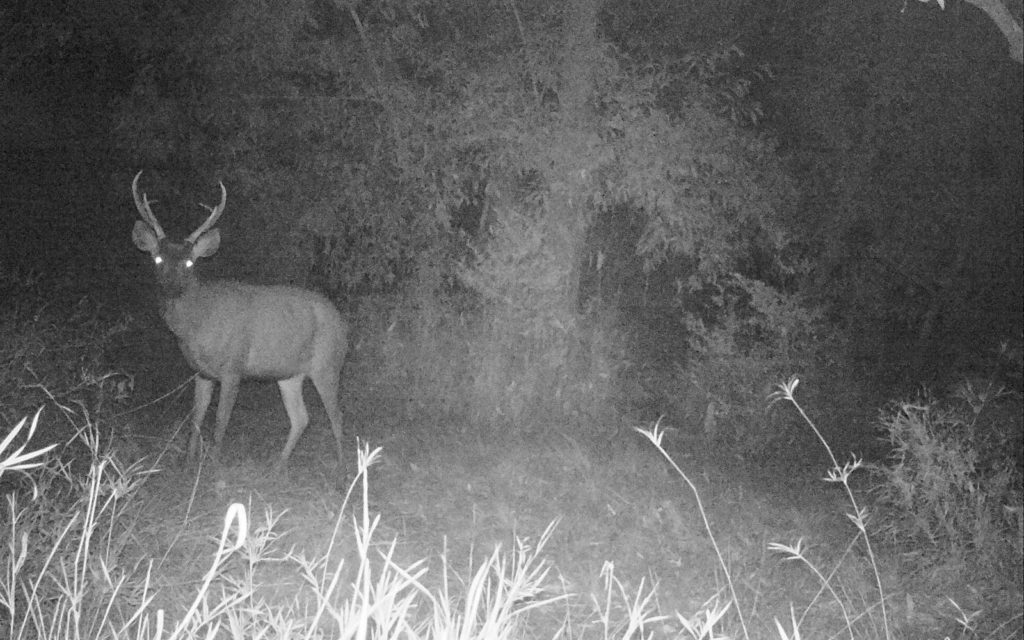
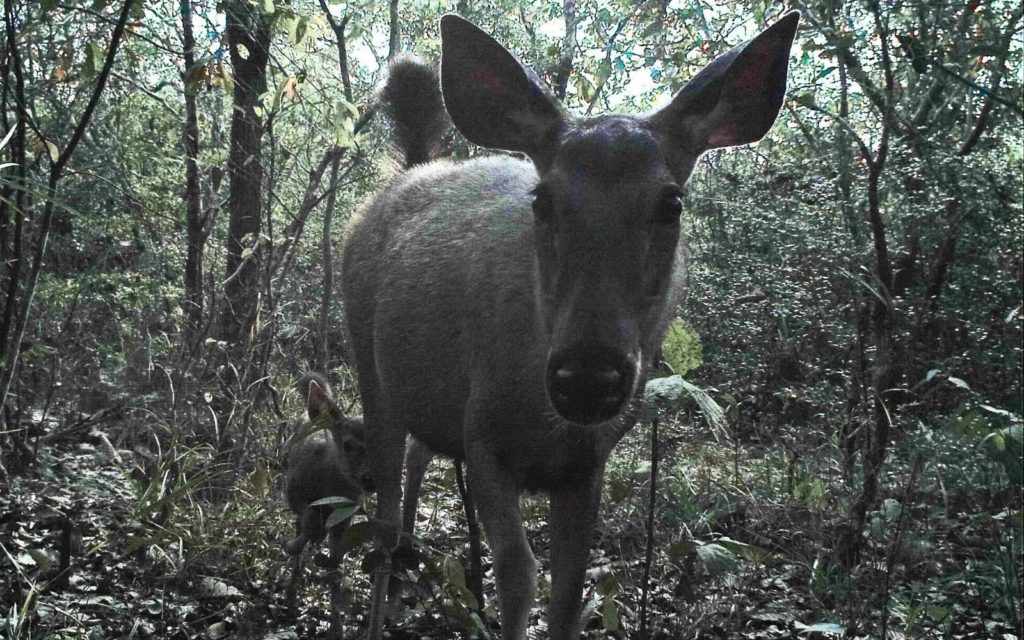
Marx, who has been working on animal conservation in Cambodia for 20 years, said there were more than 100 sambar deer in forests — the threatened species’ tracks could be seen by reporters on Tuesday — as well as wild pigs, monkeys and rare birds.
Painted storks, pelicans and greater adjutants, which is part of the stork family, also make the forests their home for parts of the year.
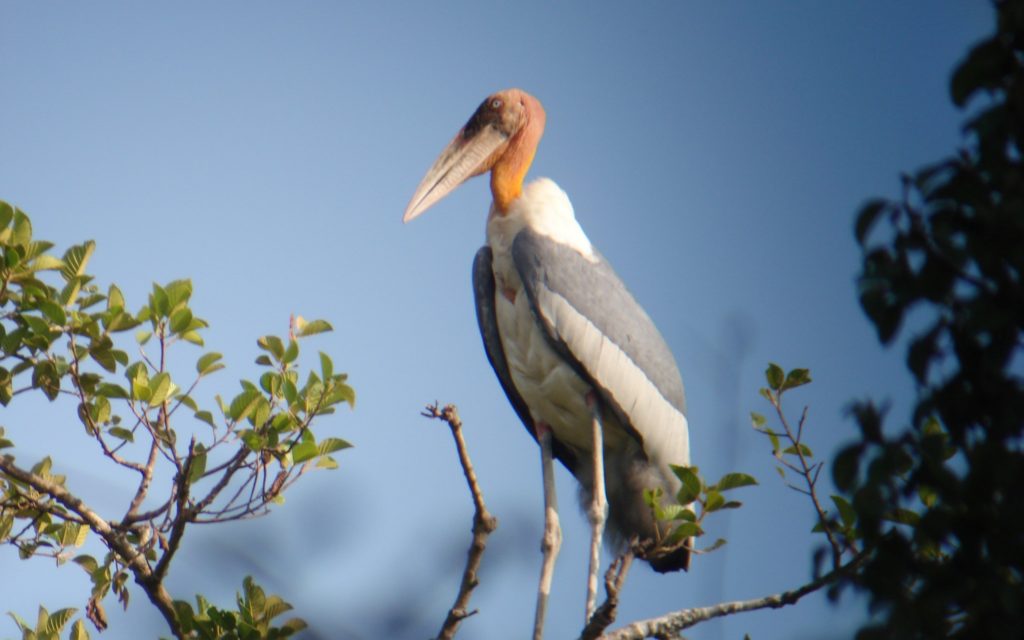
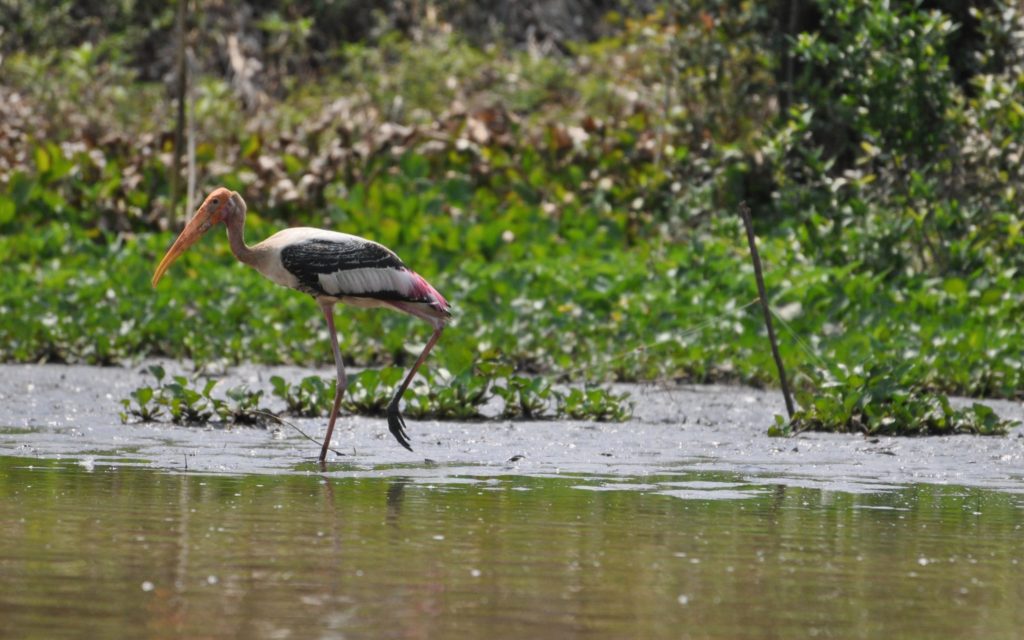
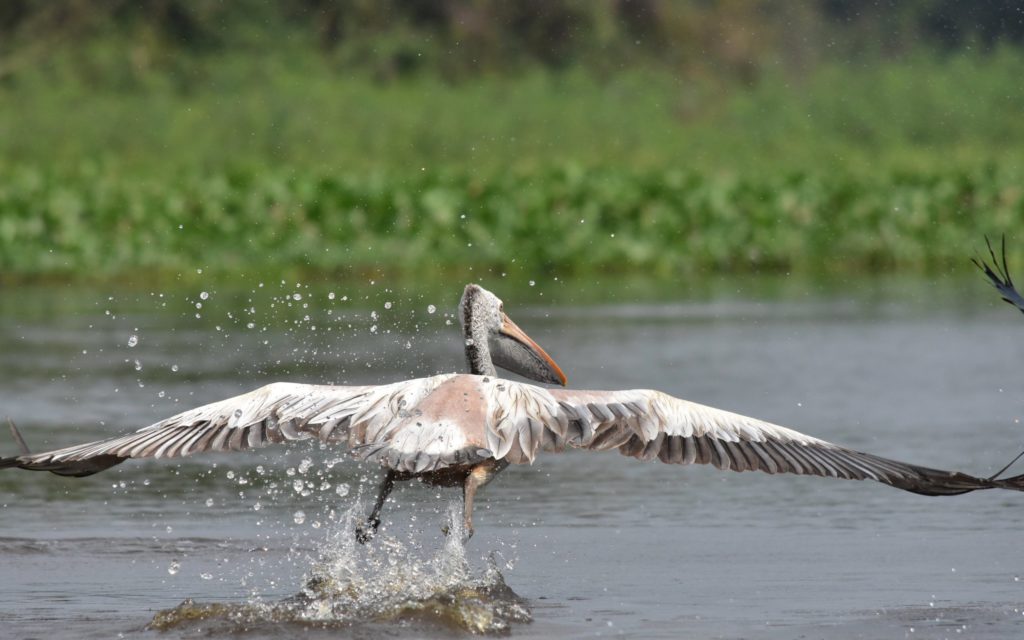
He said evacuating those animals would be difficult and devastating.
“They will run away to the village. They can get killed by the people,” Marx said in Khmer. “This is their house. It belongs to them. If the forest is gone, where could they go? They’ll die, die, die.”
Inside the forest is a small pagoda, Wat Tmor Antorng, whose chief monk Sot Phally said on Tuesday that state officials had visited just a day earlier and began to measure the pagoda’s land. He was invited to a meeting with provincial officials on Friday about “exchanging land,” he added.
“I don’t know what’s going on,” Phally said. “They didn’t answer.”
Phally also had a Council of Ministers letter dated January 14 this year informing the provincial governor and the ministries of agriculture, finance and land management that the government had agreed in principle to hand two large plots of state land in Phnom Tamao to companies in exchange for land elsewhere.
One plot slated for transfer was 300 hectares housing Khmer Fresh Milk’s Kirisu dairy farm, which appears to be currently adjacent to, but outside, forested areas in Phnom Tamao’s southeast. It was not clear whether the 300 hectares would encroach on the forest.
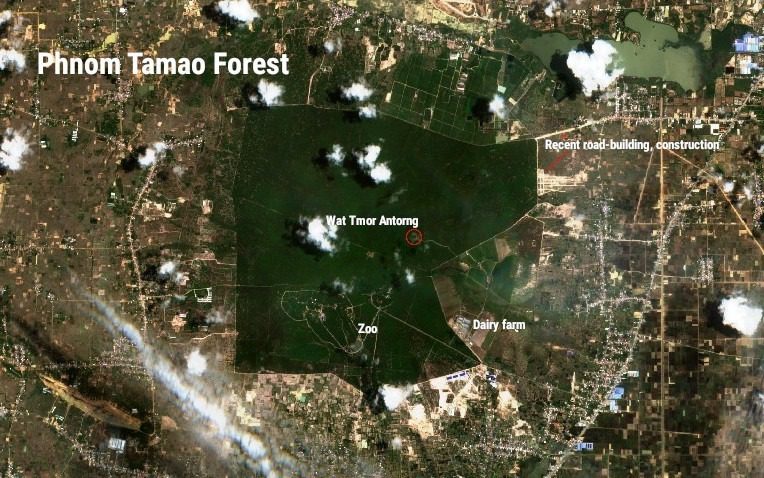
The second plot was 500 hectares currently controlled by the Forestry Administration, the letter said.
Takeo deputy governor Ly Savet said he had seen the letter, and was waiting for a more formal order from the Agriculture Ministry, which controls the sanctuary. He said he did not know which companies would receive the land, and did not give further details.
Agriculture Ministry secretary of state Srey Vuthy declined to comment, referring questions to the ministry’s Forestry Administration. The administration’s director, Keo Omaliss, could not be reached.
Kuy Tong, the Forestry Administration’s deputy director of the Phnom Tamao Wildlife Rescue Center, said he had seen the land boundary markers in the forest, and didn’t know their purpose. He also said he didn’t know about wildlife in the wider Phnom Tamao forest outside the rescue center.
“I only know about animals in the zoo, which has 400 hectares surrounded by a fence,” Tong said.
None of the officials had answers for the land measuring visibly happening inside the forest.
Horm Saravuth, deputy director of the Forestry Administration at the ministry, said he had no information about plans to clear the forested land. “I don’t know anything about this work. The Forestry Administration only takes care of the land. You should call the ministry.”
Agriculture Minister Veng Sakhon did not respond to requests for comment.
At the zoo, a food seller noted how land prices around the forested area had multiplied in recent years, and said many people were concerned about the rumblings of development in the forest.
Marx, the Wildlife Alliance director, said he knew that speaking out could raise the ire of some people, but said he was undeterred. He had installed camera traps in March to show the value of the forests, he said. Several examples of endangered species have already been photographed by the traps.
“The reason I’m worried is that here there is so much wildlife. If there were no wild animals, I wouldn’t be so worried. That’s why we placed the camera as evidence — that, yes, we have them. At night we can 100% see them.”
“Phnom Tamao is like a diamond, and the people want this,” Marx added. “There is only one way to help the mountain, and that is for the government to help back this Tamao mountain,” revoking the plans for development.
“I plead: Don’t do it.”


